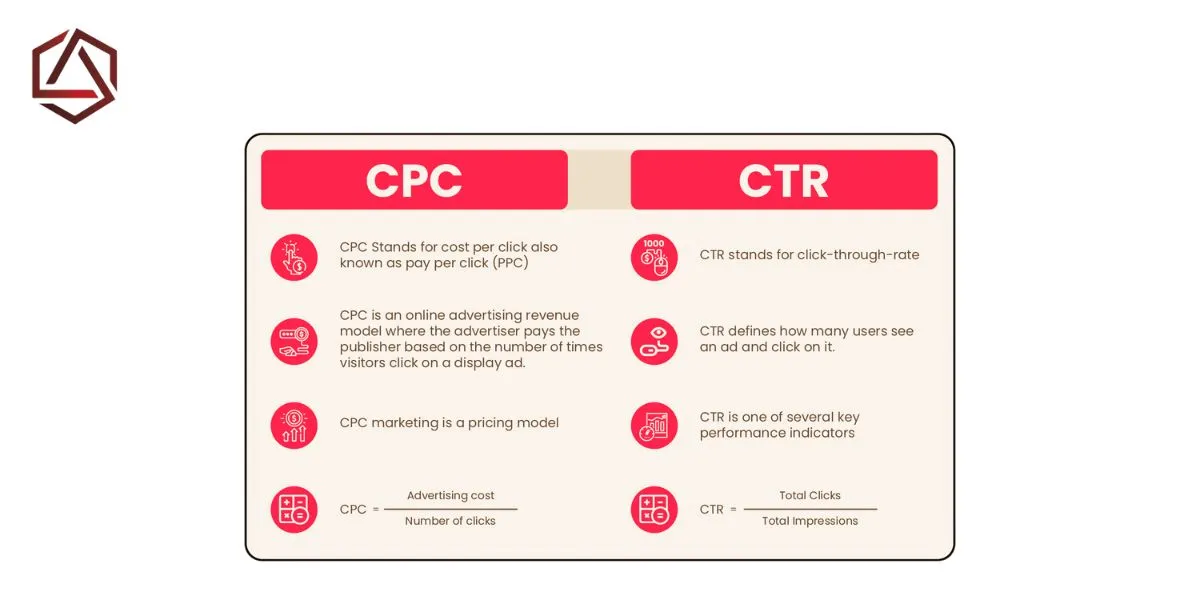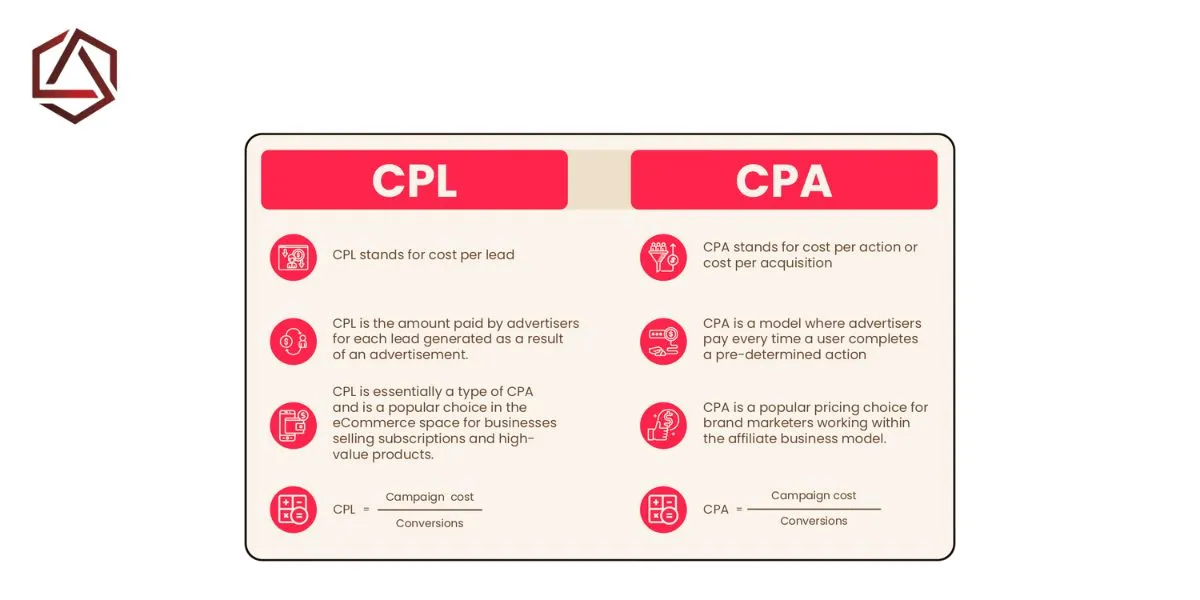Table of Contents
ToggleFor advertisers and publishers looking to launch online advertising campaigns, knowing the terms used in digital marketing could be a complex undertaking. Once a publisher knows the different performance-based pricing models for marketing, decide which is best for their campaign and use the advertising metrics to gain further insight.
In this article we will explain the basic concepts of CPM, CPC, CPA, CPI, and CPV. How to distinguish the various models, and how to select which strategies will yield the most value for your advertising expenditure.
CPC vs CPM: What's the Difference?

CPC refers to cost-per-click. Also referred to as pay-per-click (PPC), a CPC system is a payment model in which advertisers only pay for each click on an advertisement.
Simply put, CPM refers to how you pay to show the ad to 1000 people. It is at the very uppermost point in the marketing funnel. Atop the funnel, the CPM model is an excellent option for companies who want to raise brand awareness.
Although CPC marketing can be costlier than CPM, it’s frequently employed in lead generation strategies because it can bring more visitors to an advertising company’s site. It can be very effective in promoting trust with customers.
CPV vs CPA: What's the Difference?
The pricing model the advertiser selects is contingent on the kind of advertisements that are online, the selection of platforms for advertising, as well as the final purpose of the advertising campaign.
CPM vs CPV: What's the Difference?
In contrast, cost per mille is the measure of advertising cost per 1,000 impressions of ads. The term CPV is used to describe the cost per viewing of a video advert within an online advertising campaign.
Although CPM is a great option for businesses trying to raise brand awareness, CPV (cost per SINGLE view) can only be used in video-based campaigns or pop-up advertisements and is typically utilized for mobile applications.
CPA vs CPM: What's the Difference?

CPA performance-based campaigns depend on the users performing a specific specified, defined action after being presented with an ad. The effectiveness of the CPA advertisement is dependent on how well the user converts.
The formula used to calculate CPA is the cost of a campaign in total divided by the amount of conversions (or decisions taken) by the customer. With a CPA campaign, the publishers take on the entire risk since they are not compensated in the event that users don’t succeed in converting.
Contrarily, CPM ads are relatively less risky for publishers because they pay per 1,000 impressions, regardless of the user’s actions.
CPM vs CPI: What's the Difference?
Although CPM is the term used to describe the amount of every one thousand advertising impressions, CPI, also known as cost per installation, is the price of every installation of software, such as a game, application, or program.
Even though CPM is the most well-known marketing metric used by ad websites that display banner ads, native ads, and hover ads, CPI marketing is the most popular in mobile apps that are trying to attract new customers and improve their download rates.
CPC vs CPI: What's the Difference?
Since advertisers pay only for the number of customers who install the app in response to the ad, It is a popular choice for advertisers who want to maximize the returns on advertising (ROAS).
CPA vs CPI: What's the Difference?

In the past 15 years, at the time when 99-cent apps were typical across apps at the time, the CPI pricing model was the most commonly utilized metric used to evaluate app performance within the app ecosystem for mobile devices.
CPA is now the popular KPI because it is able to take into consideration the complexity of the free-to-play and freemium market.
CPA vs CPC: What's the Difference?
CPA refers to the cost per action or cost-per-acquisition. Through CPA or the CPA method, businesses get paid every time an individual performs a predetermined action, including a click buy, download, or download.
CPA is a preferred pricing option for marketers of brands working in the affiliate business model.
Though most online marketers favor using the CPA model since they pay only for user conversions, it’s not the most popular choice for publishers because they have to carry the risk until they can convert. The CPC model, in contrast, has a relatively low risk to publishers as they receive a payment in exchange for clicks instead of customer acquisition.
CPC vs CTR: What's the Difference?

CPC measures how much you’re spending per click. CTR measures the efficacy of the ad’s performance by creating clicks based on how many instances it was shown. Both are important for marketers to assess the effectiveness and performance of their advertising campaigns.
CPC (Cost Per Click):
CPC is a measure that reflects the amount an advertiser pays per user who clicks on their ads. CPC is calculated by dividing all an advertisement’s costs by the clicks it generates. For example, if you invest $100 in an ad that produces 50 clicks, your CPC will be around $2.
CTR (Click-Through Rate):
CTR On the contrary, it is a percentage, which is the ratio of impressions to clicks. CTR is determined by dividing the number of clicks by the number of prints and multiplying that by 100 to arrive at an amount. If, for instance, your advert receives 1,000 views and 50 clicks, your CTR will be 5 percent.
CPL vs CPA: What's the Difference?

CPL is a specific measure of the cost per lead. CPA is a more inclusive measure that considers the costs of any purchase or action, making it suitable for various digital marketing campaigns.
CPL (Cost Per Lead):
CPL refers to the expense incurred by the marketer to acquire leads. Marketers pay for every potential lead for generation campaigns. The method for calculating CPL is to divide the cost of the advertising campaign by the number of tips created.
In this case, for example, if an advertiser spends $200 on an advertising campaign and acquires 50 leads, then the CPL is four dollars.
CPA (Cost per Acquisition):
The formula used for CPA is the same as CPL; however, it includes the cost of all activities divided by the amount of conversions. In the example above, if an advertiser spends $500 on an advertisement and gets 20 converts (sales or registrations), the CPA would be $25. CPA is just $25.
CPM vs CPL: What's the Difference?

CPM is concerned with the cost per 1000 impressions. This is the measurement of the cost of exposure. CPL is more focused on how much per lead, which measures the expense of getting new customers.
CPM (Cost Per Mille):
This is typically used for displays that aim to improve brand recognition. In the example above, if CPM is $5, and the advertisement receives 100,000 views, it would cost 500 dollars.
CPL (Cost Per Lead):
Calculating CPL is dividing the amount of money spent on the campaign by the number of tips created. In other words, if the advertiser pays $200 on an advertising campaign and acquires 50 leads, then the CPL is 4 dollars.
CPC vs CPL: What's the Difference?

CPC concentrates on the price per click. In addition, the CPC measures the price of user interactions. CPL is focused on cost per lead, measuring the expense of acquiring new clients.
CPC (Cost Per Click):
CPC is a measure that determines the amount that a business pays for every impression it gets from its ads. CPC is determined by dividing all the costs of an advertisement by the number of clicks produced. For example, when an advertiser invests $100 for an ad and gets 50 clicks, the CPC is $2.
CPL (Cost Per Lead):
The method for calculating CPL is divided by the total expense of the campaign by the number of tips created. In other words, if the advertiser spends $200 on the drive and receives 50 charges, then the CPL is 4 dollars.
CPC vs CPV: What's the Difference?
In contrast, CPC concentrates on the price per click (CPV), which is more specific on the cost per click, which is especially relevant for videos where engagement is measured through the watching of the video.
CPC (Cost Per Click):
CPC (Cost Per View):
For example, if the advertiser pays $50 for an advertisement for a video and is assessed for each viewing where a minimum of 30 seconds is watched when they receive 100 views, then the CPV would be $0.50.
Mahnoor Murtaza is the Head of the Content Writing department at DE Media Solution. She’s been involved in content writing since 2022 and specializes in English literature & linguistics. She has worked with us on several projects to create web content and blogs/articles. A good habit in me that is “Book Reading”





